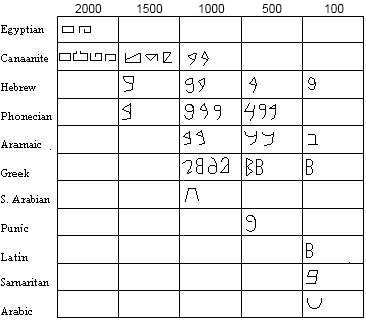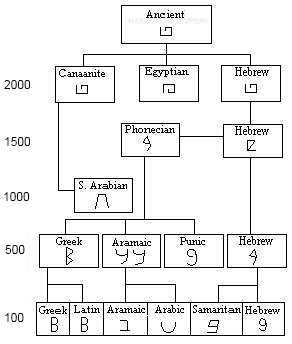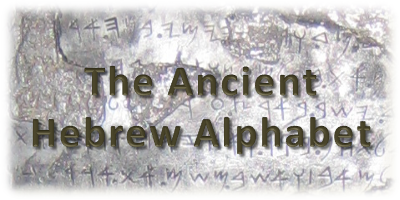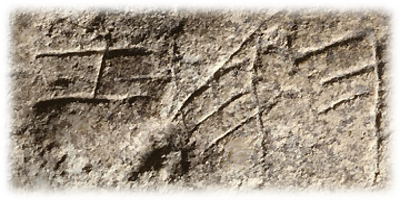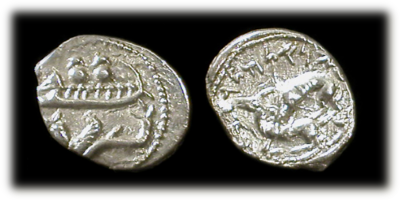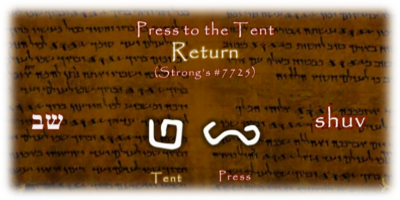History & Reconstruction
Several variations were used for the original pictograph including  ,
,  ,
,  and
and  . Each of these pictographs is representative of a house or tent. The pictograph
. Each of these pictographs is representative of a house or tent. The pictograph  is chosen as it best represents the nomadic tents of the Hebrews. The tent was divided into two sections, men's and women's, with the entrance at the front of the tent in the men's section and an entrance from the men's to the women's section.
is chosen as it best represents the nomadic tents of the Hebrews. The tent was divided into two sections, men's and women's, with the entrance at the front of the tent in the men's section and an entrance from the men's to the women's section.
The Hebrew word 
 (beyt), the name of this letter, means house or tent as well as family. A common designation for a family is to identify the "house" of the family patriarch such as in "The house of Jacob."
(beyt), the name of this letter, means house or tent as well as family. A common designation for a family is to identify the "house" of the family patriarch such as in "The house of Jacob."
The meanings of this letter are house, tent, and family as well as in, with, inside or within as the family resides within the house or tent.
The Hebrew name for this letter, beyt, is equivalent to the Greek name beta and the Arabic name beyt. This letter is pronounced as a "b" when sounded as a stop, such as in the word beyt, or a "bh" (v) when used as a spirant, as in the word shubh (shoov).
This letter is commonly used as a prefix to words to mean "in" or "with" as in be'erets meaning "in a land."
The Early Semitic letter  evolved into
evolved into  in the Middle Semitic script and into
in the Middle Semitic script and into  in the Late Semitic script. The Modern Hebrew letter ב developed out of the Late Semitic. The Middle Semitic script was adopted by the Greeks to become the letter Β (a reverse direction due to being written from right to left instead of left to right) and the Roman B and b. The Late Semitic
in the Late Semitic script. The Modern Hebrew letter ב developed out of the Late Semitic. The Middle Semitic script was adopted by the Greeks to become the letter Β (a reverse direction due to being written from right to left instead of left to right) and the Roman B and b. The Late Semitic  became the number 2.
became the number 2.
 ,
,  ,
,  and
and  . Each of these pictographs is representative of a house or tent. The pictograph
. Each of these pictographs is representative of a house or tent. The pictograph  is chosen as it best represents the nomadic tents of the Hebrews. The tent was divided into two sections, men's and women's, with the entrance at the front of the tent in the men's section and an entrance from the men's to the women's section.
is chosen as it best represents the nomadic tents of the Hebrews. The tent was divided into two sections, men's and women's, with the entrance at the front of the tent in the men's section and an entrance from the men's to the women's section.


 evolved into
evolved into  in the Middle Semitic script and into
in the Middle Semitic script and into  in the Late Semitic script. The Modern Hebrew letter ב developed out of the Late Semitic. The Middle Semitic script was adopted by the Greeks to become the letter Β (a reverse direction due to being written from right to left instead of left to right) and the Roman B and b. The Late Semitic
in the Late Semitic script. The Modern Hebrew letter ב developed out of the Late Semitic. The Middle Semitic script was adopted by the Greeks to become the letter Β (a reverse direction due to being written from right to left instead of left to right) and the Roman B and b. The Late Semitic  became the number 2.
became the number 2.
